‘In our world,’ said Eustace, ‘a star is a huge ball of flaming gas.’
‘Even in your world, my son, that is not what a star is but only what it is made of.’
—C. S. Lewis, The Voyage of the Dawn Treader
Do not be alarmed by the title of this essai. The problem I propose to discuss is a problem only for critics; though for them, I contend, it is critical. For the past century at least, literary criticism has been going up a blind alley; or, put less charitably, contemplating its own navel until it falls right in.
The influential critics, the ones who establish critical schools and write textbooks and contribute to learned journals, are too often pure academics with no experience of writing literature, and the literature they actually read is only a tiny subset of the available universe of fiction and poetry, consisting mostly of technical exercises written to exemplify the very theories by which the critics propose to ‘explain’ them. (If you want to sell a story to a literary journal, you had better write in the editors’ preferred code, so they can decode your story and feel clever doing it.) In my time I have seen various theories come and go. They all have this in common, that they are very good indeed at analysing texts written explicitly with the theories in mind, but when they are applied to older or more popular works, they reveal anything and nothing: chiefly, they reveal the critic’s own biases, and conveniently allow him to find in the text the very worst things that he expected to find.
The ‘New Criticism’ was already old when I was young, and the Freudian and Marxist schools are older still. Since then we have seen the rise, and in most cases also the fall, of the Structuralist, Postmodernist, Feminist, and Critical Theory schools, among many others. Every one of these schools has the same weakness and is open to the same objections: they all attend exclusively to the text of a story, and puzzle it out as if it were a linguistic riddle or a cryptic crossword, and not at all to the experience that the story conveys to a reader. It is true that this experience is subjective, and the text is objective; but the text exists only to induce that subjective experience in the reader, and as far as possible, to recreate in the reader something of the writer’s own subjective thoughts and feelings, and communicate some facet of the writer’s understanding of the world. It is ‘objective’ to measure a sunset with a spectroscope, but that does not get you any closer to understanding how ordinary people experience sunsets.
On the lowest level, that of strict genre fiction written to order by formula, the writer’s understanding may be truncated or even falsified. The reader of a Harlequin romance, for instance, wants a love-story of a particular type, and the writer had better understand (for the duration of the writing project) that Love Conquers All, and that inside every ugly-duckling reader, if only in her imagination, a beautiful swan is trying to hatch out. The writer’s private feelings may be quite different, but her persona as an author is expected to communicate certain stylized sentiments. If the writer is male, he is, or was till recently, expected to communicate that he is actually female: I have read that about a quarter of category romances used to be written by male authors under feminine pen-names. The whole exercise is rather like kabuki: so stylized that the actor not only is playing a part, but has to pretend to be a very specific kind of actor and play the part in a prescribed way. Masks are worn over other masks, until the person wearing them can hardly be seen at all.
Thankfully, most authors are not required to be so insincere; even the writers of category romances are usually fans of the genre themselves, and cheerfully ignore their own unromantic impulses while wearing the mask. We can therefore leave the question of the author’s personal sincerity on one side. What chiefly matters is not that the author’s whole view of the world shall be conveyed to the reader – that would be impossible to do in any one book – but that he conveys the essential bits of his world-view that he wishes the reader to receive.
The ‘New Criticism’ carefully excluded this entire act of communication, both the writer’s intention and the reader’s emotional response, as too ‘unscientific’ to be worthy of study. At any rate they were impossible to replicate in a laboratory or measure with instruments. The heyday of New Criticism (it is no coincidence) was also the heyday of the physical sciences, when governments all over the world were pouring millions into research to create atom bombs and rockets, cyclotrons and computers, and every other branch of academia was aping the objective aura of physics to get some of that grant money. For the study of literature, this pretended objectivity was disastrous. Storytelling is essentially an act of communication; if you exclude both the teller and the audience from consideration, what remains is strictly meaningless. But for a time in the middle of the last century, this meaningless exercise could put on a white lab coat and expect to be generously funded.
The other schools I have mentioned, in their own way, falsified the act of communication by assuming that a certain kind of communication was taking place – that all human communications were of this kind – and that both the author and the reader were zombies, unaware of what they were doing, though by some magical power exceeding telepathy itself, the omniscient Critic could know what was ‘really’ going on. It is the old, old fallacy of Gnosticism: the idea that all of humanity is unaware of the true nature of things, but for some reason which is never explained, a tiny minority has the power to see through all the illusions to the radically different structure of what is really going on. Of course the Gnostics always flatter their ‘marks’ by including them in that minority: it is the only thing they have to sell, and it works powerfully on human vanity, which is a powerful motivation for most people and almost the only motivation for some.
So the Freudian says that Hamlet is ‘really about’ the struggle between Shakespeare’s own id and superego; the Marxist, that it is ‘really about’ class-struggle in a feudal society; the Feminist and the Critical Theorist will agree that it is ‘really about’ Shakespeare’s position as an evil conspirator in the Patriarchy or the White Race (or both), and his attempt to marginalize and silence all other views by imposing the ‘narrative’ of his side. Of course they all agree that whatever Hamlet was ‘really about’, Shakespeare was completely unaware of it; he could not possibly have known his own thoughts, though the critic can read them plainly from four hundred years and several cultures away. C. S. Lewis made short work of such critics:
They claim to see fern-seed and can’t see an elephant ten yards away in broad daylight.
The New Critic, meanwhile, denies that Hamlet is ‘about’ anything at all, and disregards both the author and his four hundred years of audiences with a snort of scientific contempt.
None of these critical schools form any conception of what Hamlet is actually about, because they never troubled to consult any of the actual parties to the communication. They are not even allowed to consider their own honest reactions to the play: the New Critic is required to ignore his responses, and the others are required to bring their conclusions to the play before they see or read it, and ignore everything that does not support their narrative, no matter how central or essential it is to the story Shakespeare was telling. (The practice of ‘close reading’, favoured by nearly all academics, is specifically designed to prevent the reader from forming any response to the work as a whole. When a reader does respond to the work, it is dismissed as ‘naive identification’ and tends to make the academics very angry.) It is all bunk, and it is all much the same kind of bunk. Sadly, these schools and others like them have predominated in formal literary criticism for more than a hundred years.
We can have two honest views of what Shakespeare was doing in Hamlet. From the purely exterior view, he was writing an exciting drama, the Jacobean version of a ‘thriller’, to attract paying customers to fill up his theatre. The interior view is much more interesting, because it alone can tell us why those customers were attracted, and why people all over the world have found both entertainment and insight in Hamlet in every succeeding century. To the extent that we want to perform literary criticism, rather than economics or historiography, we need to attend to that interior view.
George Orwell observed that the subjects of many of Shakespeare’s best plays can be summed up in a single word: Hamlet is about revenge. Hamlet himself needed to be hesitant so that the whole psychological process of revenge could be dragged out into the open: we needed to see him making the choice to take revenge, as well as acting on that choice. The ghost needed to appear so that the audience could see whom Hamlet was avenging, instead of just hearing dry récit about it. The bloodbath at the end showed the destructive consequences of revenge pursued to its logical end; for the sake of drama, it crammed into a single act the violence and hatred that usually play out over decades in real life – in the blood feud of the Hatfields and McCoys, or in the Dolchstoßlegende that led the Germans to start the Second World War as vengeance for the outcome of the First.
A useful literary criticism, on this view, must begin by acknowledging that a story is, first and foremost, an act of communication between a storyteller and an audience, and the object of telling the story is to convey something of the teller’s perception of the world, to which the audience will have an appropriate emotional response.
Even a very dry and cerebral writer like Olaf Stapledon relies on producing an emotional response. Last and First Men works on the reader by inducing, first, that sense of awe we naturally feel in the presence of immensity, which in art is called ‘the sublime’; second, the sense of wonder at observing intelligent creatures who (though Stapledon calls them ‘Men’) are very different from humans as we know ourselves; and finally, the sense of tragedy and desolation when the story ends in the extinction of life and the heat-death of the universe.
These are not the emotions of everyday life; they are the emotions of the epic, and Stapledon was an epic writer on the very largest scale. They stand at the opposite extreme from the minutely detailed stories of ordinary life and ordinary feelings that were the bread and butter of the Modernists, which Oscar Wilde dismissed as ‘teacup tragedies’. But the central act of communication and emotional response is the same at both extremes and everywhere in between.
I once had a physics teacher, Harry Zuurbier, who insisted that if you could not define a technical term in ten words, you didn’t understand it; though of course you were allowed to define it by using other technical terms which you had previously defined. Many years after I knew him, I applied his rule to the word ‘Art’, and came up with a definition that I rather liked: ‘Art is skilful presentation of sensory stimuli to educe empathy’.
Unless it evokes some emotional response, visual art is only decoration; literary art is only information; musical art is only background noise. It is the skill of the presentation that makes a work eligible to be considered as art; what makes it successful art is the degree to which it produces in the audience the kind of response that the artist intended to achieve. A successful comedian can be funny on purpose; a very unsuccessful one is only funny accidentally.
The critical problem (to return to my title phrase), the problem that faces us whenever we try to follow any of the customary schools of criticism, is that they all force us to ignore the central function of literature, and focus instead on technical details of the text. These are to be interpreted not in a natural way, as the reader does who reads a book for pleasure, but in the most unnatural way possible: pretending that the author and reader alike have no significance, so that the text exists only in itself, or only in relation to some particular structure which society as a whole is assumed to have. The futility of this procedure, I think, will become obvious if I give a couple of examples transposing it into other fields of study.
Imagine, first, Bugs Harriman, a bad entomologist. Poor Bugs has spent his whole life studying insects, but all the insects he studies are dead and pinned to cards so they may be examined more conveniently. He has studied dead insects for all these years, but has never seen a live one; indeed, he rejects with indignation the idea that there is anything to be learned from a live insect, or even from considering the fact that they once were alive. Bugs is willing to entertain, purely as a hypothesis, the idea that his dead insects may once have been alive, but he considers it totally improper to assume such a thing, let alone to actually go looking for live insects and study them as they go about their business. You may readily guess that Bugs Harriman enjoys very little success in his chosen field.
Next we have Griselda Gruel, the world’s worst food critic. While reluctantly accepting that there is such a thing as eating, she rejects with dudgeon the idea that this could ever be relevant to the study of food. What matters to her is chemical analysis. Her work in the laboratory has proved that (say) a lamb chop is seventeen percent protein, ten percent fat, with traces of carbohydrates, vitamins, and minerals. A particular variety of cheese is also seventeen percent protein and ten percent fat. Therefore chops and cheese are the same thing, and anyone who claims there is a difference between them is clearly lying, no doubt from corrupt motives. Griselda takes no notice of the processes of cheesemaking and cooking by which these dishes are prepared, nor of the processes of eating and digestion. She dismisses the sense of taste out of hand: people report that chops and cheese do not taste at all alike, and why are they lying to her? She has proved them identical in every way that really matters, so the difference of flavour is obviously an illusion. Most of her time is spent analysing the deep-seated mental illness (or it may be a conspiracy) that induces apparently sensible people to think that one food tastes unlike another when they can both be reduced to the same components in a chemist’s lab.
These people are obviously very silly; but no sillier than the critics who pretend to analyse ‘texts’ without allowing themselves to experience the texts as stories. Their insects are always dead and pinned to a card; their dinners are always analysed in test-tubes, never tasted, chewed, or swallowed.
What we need here is to rediscover an older kind of criticism that explicitly considers both the intentions of the author and the responses of the reader. Aristotle produced a very early specimen of this in his Poetics, and it remained the dominant type of criticism (with many changes of detail and emphasis) until the turn of the twentieth century. The best respected critics were generally those who had at least conscientiously tried to write literature themselves, who knew how and why it was done, and who had deeply appreciated the literature they had read. They rejoiced to see the butterfly flutter by; they did not wait until he was chloroformed to take an interest in him.
Today, with tools like information theory, we could, if we chose, come up with a much more precise and powerful understanding of literature than Aristotle dreamed of; but critics, on the whole, do not choose – partly, I suspect, because information theory and its allied fields involve considerable mathematics, and the sort of people who get doctorates in the humanities tend to pride themselves on not knowing any.
I am very far from suggesting that I myself could come up with a working theory of literature. I don‘t have the mathematics to apply the modern tools, nor the patience to school myself in the old methods (in which, nowadays, I would have to be largely self-taught). But I do have an odd combination of experiences, which puts me, I think, in a position to suggest a possible framework in which such a theory could be constructed: which, at any rate, will account for the one-sided nature of merely textual analysis, and point to ways that stories could be analysed without first dissecting them to the sentence level, and thereby killing them as stories.
The New Critic in particular resembles the drunkard under the lamp-post, looking for his keys not because they are there, but because that’s where the light is. I don’t pretend to see in the dark, but at any rate I have seen other lamp-posts, and found things by their light; and I now venture, diffidently and with respect, to suggest to the drunkard that he might find his keys under one of those instead.
(To be continued.)
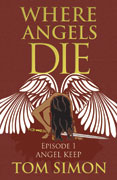
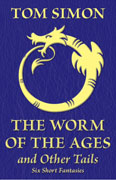
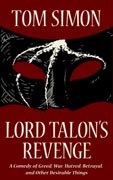

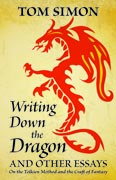
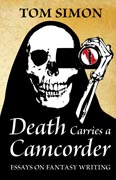
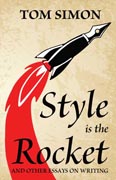
I propose a definition of art, the only definition of art that has ever made sense to me:
Art is any work produced to a standard. If you do not produce the work to a standard, a standard that the work can be judged to meet or not meet, you simply have not produced art.
I had an interesting conversation with my sister on this point. I was expressing frustration with a creator I enjoy. She makes short animated videos to go with songs. She was complaining in an interview that people had told her they did not like her design for Poseidon (she was adapting a song in a musical version of “The Odyssey”), and this was so upsetting for her she almost stopped making songs for the musical entirely.
Now, this creator was BELOVED in this particular fanbase, and extraordinarily talented. The video she was talking about racked up thousands of likes and is considered to be one of the very best versions of that song. It is true that one of the consistent criticisms of it was her design of Poseidon, especially his face. In fact, I had made that criticism myself – but that criticism was quite simply a very tiny point in a sea of near-universal praise. So she appeared to me like she was complaining about being given *any criticism whatsoever* – which I maintain is simply absurd and unreasonable.
My sister agreed with me, and then thought for a moment. “I do think there are times where it is fair to explain you are not interested in being criticized,” said she. “For example, this happens with fanfiction creators a lot. They mess around with the characters for some fun, share it with the world, but ask not to be criticized because it’s just for their personal amusement.”
“But,” she added before I could respond. “If that is what they are doing, they are not creating art.”
And I agree. I think that was my frustration with the original creator. She was, perhaps unintentionally, trying to have her cake and eat it too – create something, release it to the world, but not be beholden to any standards for it. Very well – but then you disqualify what you have released from being art. I don’t think she would agree with this.
The unfortunate thing is that this is the norm among all but very few critics, which significantly hampers their ability to say anything meaningful.
I like your definition but (in my own act of expressing perhaps-undesired criticism) I think perhaps it too needs a little flexibility: I would suggest that art is work produced in an attempt to reach a standard of effect (if not always a consciously chosen and understood one). There are many creative works I enjoy despite their “badness”, i.e. failure to reach a particular aesthetic standard; I would still do them the honour of calling them art, they’re simply flawed art.
Likewise I would argue for the right of the artist to express no interest in reading criticism without disqualifying his work thereby as art — not least because much of what calls itself “criticism” is in fact merely vitriolic hostility to works disliked for reasons having nothing to do with their quality or intent. This must include the caveats, however, that (a) in practical terms, an artist wishing to improve his skill cannot afford to disdain feedback, and (b) if the work of art is being sold, the ethical obligation of a seller to provide at least something of what the buyer is spending money to gain likewise imposes a duty to understand how that transaction failed, if it did.
By being produced to a standard, I don’t mean that art always needs to hit the standard. I mean that there IS a standard that they CAN fall short of, or else it is not art.
“Likewise I would argue for the right of the artist to express no interest in reading criticism ”
Anyone has any right they wish to read or not read criticism; what they do not have is a right to do is say that criticism is somehow beyond the pale or inappropriate, if they are trying to create work to any sort of standard, or in other words, create art. In this case, the criticism “This is absolutely great overall, but Poseidon’s facial expression feels off for the song, almost too angry” – generally this is what she was getting – is perfectly valid. She could of course disagree with it, or she could ignore it, as she wishes. She could read it and decide that it is poorly done. What she cannot do is be mad about getting *any criticism at all* for a piece of art produced and made public for consumption.
As always, your eviscerations of modern litracher are welcome and amusing.
What role do you see information theory playing? Wouldn’t that be just another way of analyzing the text with no reference to meaning?
I will be interested to see if the future parts of your essay touch on what I consider to be the animating spirit behind the kinds of critical theories you’re examining here: i.e., the desire to use the critical understanding of art as a tool of advocacy.
As per William Dean Howell’s attempt to get dragons out of American literature, when one judges art not for how well it creates a particular kind of emotional experience but for how useful its induced emotional experiences are to promoting a desired kind of politics, the desire to pin down the “real meaning” of a work in a way that trumps the subjective experience of actual audiences and creators is much more understandable.